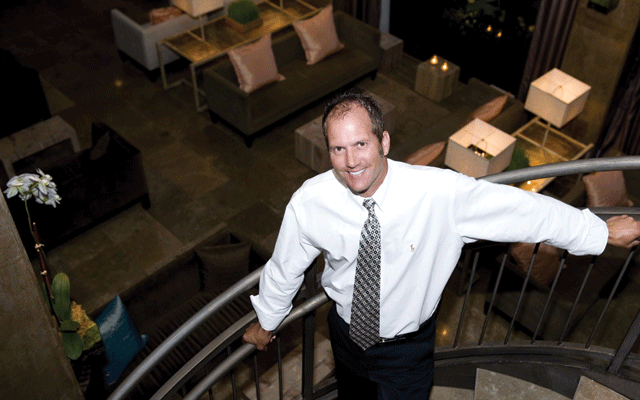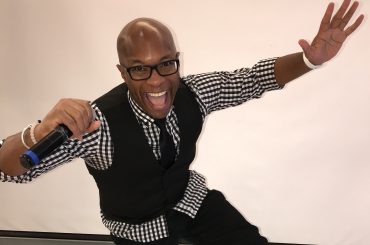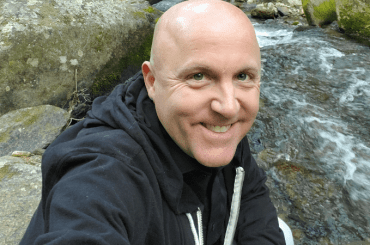Greensboro, N.C. – It all started back in 1975 in junior high school. It was in Abilene, Texas. The school band was enormous, enough people in the band to fill a school dance by itself. At this one particular band dance, there wasn’t a DJ, so Paul Cordts volunteered along with another band mate.
Cordts and his buddy ended up DJing that dance and all the dances after that. “But it was the ’70s and great dance music was plentiful,” he recalls, “just like long hair. Jefferson Junior High School… good times.”
When his family moved to North Carolina, his DJing reputation followed, and he was soon asked to spin a dance at his high school. “Soon after that, other local schools heard about the success we were enjoying and they asked if I could do dances at their schools,” he says. “The word quickly spread and I started doing school dances on a regular basis. The money was good and the fun was better. I began to realize that with work and marketing, I could make some good money at this job.”
The work and marketing paid off, as Cordts expanded his clientele to weddings and corporate events. He hasn’t looked back since. His dad used to call it an “unconventional form of employment,” says Cordts. “And all my friends thought it was cool!”
After college—he went to North Carolina School of the Arts and majored in lighting— Cordts began to pursue DJing as a business. He moved to another town to pursue a “college-related” job and continued to DJ on the side. Word continued to spread and weekends became booked with shows.
“I started to do mass mailings and postcards to potential clients and corporate contacts,” he says. He also focused on vendor contacts. “I know my local vendors and I am sure to make them aware that they are appreciated. They are some of the finest and most highly trained people in the business, and I’m fortunate to know and work with them. Their recommendation to potential clients is vital to my success.”
School and corporate clients are obtained through email marketing, mass mailing and word-of-mouth. Cordts sends out a lot of postcards once a month to schools within 100 miles. “Keeping your name recognizable to teachers and advisors is paramount,” he says.
But the No. 1 business generator has always been word-of-mouth advertising. “Good talk,” he says, “brings great business.”
Cordts breaks down the referral process into four important aspects:
Value: “Making certain that the client believes, at the end of the event, that they got more than what they paid for.”
Accessibility: “Making certain that the client knows that they can contact you whenever needed, to discuss whatever is on their mind. And being sure to be available to talk.”
Open to Change: “Make sure that the client knows that there is no ‘set-in-stone’ way to do anything. Let them know that any part of the program can be changed or modified to fit their individual requirements.”
Recommendation Letters: “Great recommendations seal the deal!”
Gear-wise, Cordts uses Serato DJ software on a PC with Rane MP4 mixer with a QSC Audio active-speaker system that includes units from the HPR Series and K Series. Lighting includes ADJ Mega Go Par and Mega Go Bar units, plus Martin Professional effects and Diversitronics strobes.
Though he’s enjoying hard-earned success these days, it hasn’t always been smooth sailing. In his younger days of DJing, Cordts says he “thought I knew it all and probably didn’t listen to what people really wanted in their DJ.”
He says he had “all the bling and lights and state-of-the-art sound, it was impressive. My gimmick was all the stuff I had.”
Now, he says, “My gimmick is experience and the ability to listen to the needs of the client.
“At the end of the evening’s work, I want that client to leave believing that they got a whole lot more service than what they paid for,” he says. “Even though I am being fairly and rightly compensated for my services, there is nothing better than a client believing that they got a great deal and great service.”
Cordts says he views the feedback he gets from clients as an invaluable resource. “I actually ask customers to give me feedback to help me further my business,” he says. “Feedback is the No. 1 factor for me, in regard to how I conduct myself and my business. If someone didn’t like something that I did, I need to know, so that I can adjust or eliminate the issue. Feedback can help me to develop skills and activities related to the success of my event.”
Cordts even gets feedback from bridal shows. “Bridal shows are tough, you have to sell yourself in seconds to people who are coming and going for the entire day. Sometimes they are standing with you for seconds and sometimes minutes. I have learned that these people who are with you for more than 30 seconds, are worth spending the extra time with. Even at the expense of not being able to talk to everyone. In the beginning, I thought that I needed to give out cards and meet and greet everyone that came to my booth. I have learned from feedback that you don’t have to meet everyone.
“Spending a little extra time with the potential client that wants to stand and chat about their upcoming event is critical. They want to feel special and if I’m so concerned about passing out cards to all the guests there, I will never establish the initial contact with that person who really wants to use me. You can’t meet everyone, but you can meet the ones who are really interested in what you can offer and not just coming around to pick up cards. A little attention and accommodation can seal the deal. Hopefully, the ones you missed will come back to the booth again.”
And in five years, where does Paul see his business going?
“If I conduct my business ethically and make my clients happy, I’ll be able maintain the ability to pay the bills and have fun. Life, love and the pursuit of happiness—what more is there?”








